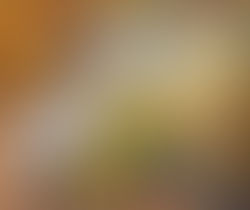MARGUERITE LOUPPE
(1902–1988)

1936
Premier Salon de la Nouvelle Génerátion, Galerie Charpentier, Paris
1958
1978
1980
1985
2017
Galerie Rene Drouet, Paris
Galerie des Granges, Geneva
Galerie Yoshii, Paris
Galerie Paul Valotton, Paris
Perle Fine/Marguerite Louppe: New York/Paris, Freedman Gallery, Albright College, Reading, Pennsylvania
Painter's Lives: Marguerite Louppe and Maurice Brianchon, Williams Center Gallery, Lafayette College, Easton, Pennsylvania
2018
Marguerite Louppe and Maurice Brianchon: Mirrors of Midcentury French Culture, Walsh Gallery, Seton Hall University, South Orange, New Jersey
2020
2021
11 Women of Spirit, Salon Zürcher, New York
A Future We Begin to Feel: Women Artists 1921–1971, Rosenberg & Co., New York
2022
Marguerite Louppe: Diagramming Space, Rosenberg & Co., New York
Over the course of her career, Marguerite Louppe witnessed the most profound transitions in French painting. The progression from post-Impressionism to Cubism to mid-century abstraction naturally impacted Louppe’s work, but her style and references remained self-aware: American critic Saul Ostrow dubbed her an “adventurous speculator,” commenting that viewers of her work “travel from Braque-like cubist still-lifes to the late studio tableaus… whose geometry and picture-inside-the-picture motifs at once are both reminiscent of De Chirico while also referencing Picasso.” In maintaining a traditional visual lexicon, Louppe never strove for a stark break from contemporary or avant-garde tropes. Rather, she worked toward a quiet reshaping of existing stylistic conventions.
Marguerite Louppe was born in 1902 in Commercy, eastern France. Her father was an engineer, and her uncle, Albert Louppe, was well-known in the civil engineering field and coordinated the construction of a famed bridge, which bares his name, between Brest and the Plougastel peninsula. Louppe’s family moved to Paris soon after her birth, and she attended the Lycée Moliere, one of the first Parisian public schools to accept female students. Despite her family’s mathematical proclivities, Louppe chose to pursue a “classical” course, focusing on literature rather than science and mathematics. Her formal artistic education started after the Lycée; until 1926, Louppe attended classes at the Académie Julian, the Académie de la Grande Chaumiere, the Académie Scandinave, and the Académie André Lhote. These establishments were hospitable to artists who didn’t fit the traditional French art school model—former students included André Derain, Maurice Denis, Édouard Vuillard, and Pierre Bonnard, and among Louppe’s contemporaries at the Académie Julian were Jean Dubuffet, Marcel Duchamp, and Louise Bourgeois. Louppe met her future husband, Maurice Brianchon, in the early 1930s through the family of Rouland Oudot, a fellow artist and close friend.
By the 1930s, Louppe had developed an intimate, stylistic focus: she painted delicate still lifes and interior scenes of life in Paris, and often placed an empty chair in the foreground, as if to initiate an intimacy between the viewer, the subject matter, and the artist herself. This early style was successful, and in 1936, both Louppe and Brianchon were included in a group exhibition at the Galerie Charpentier entitled Premier Salon de la Nouvelle Génerátion, which showed the “elite of the young painters.” The same year, the French state acquired a painting from Louppe, which is now held by the Centre Pompidou. In an exhibition at Galerie Charpentier in the winter of 1941–1942, Louppe’s works were shown alongside Kees van Dongen, Pierre Bonnard, Aristide Maillol, André Duyoner de Segonzac, Roland Oudot, Georges Rouault, Georges Braque, and Maurice Denis. Over the years, Louppe went on to exhibit her work at Galerie Charles-Auguste Girard, Galerie Druet, Galerie Louis Carré, and Galerie René Drouet.
When Louppe and Brianchon purchased their country home in Dordogne in the 1950s, Louppe had a dedicated studio space for the first time in her career. Her studio became one of her primary subjects, and her early, soft interior scenes evolved into theoretical examinations of artistic practice itself. Consistent rendering of her work surfaces and tools led to Louppe’s mature style, which draws upon Cubism and Purism while maintaining her indelible familiarity. She investigated the correlation between the lanky forms of easels with the wide perspective of the surrounding space, and repeatedly painted tables strewn with quotidian or craft-oriented objects; brushes, fans, and flowers were juxtaposed with sketchbooks and draftsmen’s triangles.
The garden and landscape surrounding Dordogne became Louppe’s other main subject, and by the 1960s, her landscapes utilized both a Diebenkorn-like abstraction and the linear refractions seen in her earlier work. “Diagonal force-lines that had once dominated her compositions,” Saul Ostrow writes of Louppe, “are replaced by true verticals and horizontals, which define rectilinear forms of modulated color, pushing her Cubism toward Synchronism.” In the final period of her artistic life, Louppe exhibited at Galerie des Granges in Geneva in 1978, at the Galerie Yoshii in Paris in 1980, and her final exhibition was at the Galerie Paul Valotton in Lausanne in 1985. The last ten years of Louppe’s life were plagued with declining vision and eventual blindness, but she maintained her practice; Louppe believed that painting is a calling, similar to joining a monastic order, and that it demands all the time and devotion one can give.
—William Corwin and David Hirsh
SELECTED EXHIBITION HISTORY































